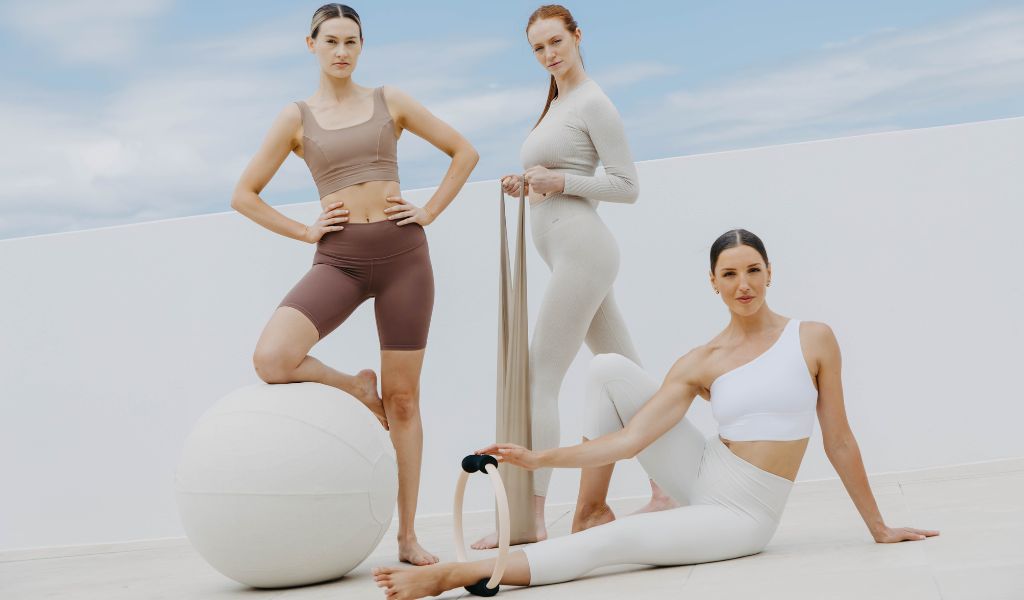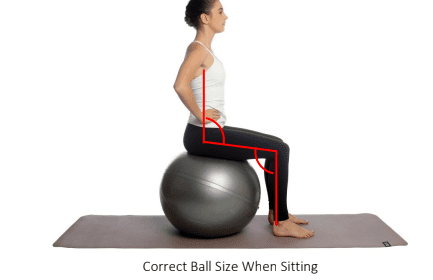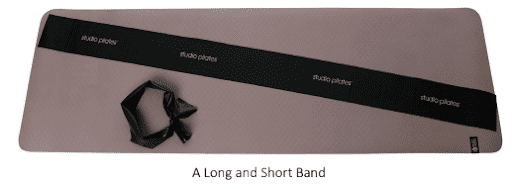Health and Fitness
The Power Trio: Pilates Ball, Circle, and Band

Why are the ball, circle and bands so popular with clients and why are they so effective at delivering enhanced client outcomes? Let’s deep dive into the benefits of the ball, circle and band equipment!
Circle
Legend has it that Joseph Pilates created his famous Magic Circle using the metal rings circled around wooden barrels. These days, the Magic Circle is a bit more comfortable to use, featuring padded handles! The circle is commonly added into the Pilates repertoire and provides additional resistance, better alignment of the body, and works more muscles at once for an even more effective workout. For some exercises, the circle is held in the hands to work the arm and shoulder muscles, while for other exercises it is placed between the ankles, shins or knees to work the inner thighs and buttock muscles.

Types of Circles –
The circle can be made of various materials, it is usually made of a flexible plastic or metal and may have a soft-rubberised shell. It usually has handles which are padded for comfort. The handles can either be just on the exterior of the circle or can be on both the inside and outside of the circle. Circles which contain handles on both the inside and outside are more versatile as they allow for both abduction and adduction movements.
The circle can come in a variety of sizes ranging from 30cm – 40cm in diameter with the average being somewhere in between.
Quality –
As with all Pilates equipment, you get what you pay for with regards to durability of the circle. If your circles will be used regularly it is more important to ensure that they are made by a reputable manufacturer and are durable or you will need to replace them often due to breakage and distortion.
Benefits of Using the Circle –
- A relatively inexpensive piece of Pilates equipment
- A lightweight piece of equipment, meaning you can transport them easily for classes on the go
- Easily added to matwork exercises to add variety and challenge specific clients within the class
- Adds resistance to Pilates exercises
- Increases activation of the T-Zone when squeezed between the thighs or shins
- Strengthens and tones the Adductor (inner thigh) muscles when in between the thighs or shins
- Effective at strengthening and toning the arms
- Can prevent hip pain and hip flexor cramping by taking some load off the thigh and hip muscles, which can become overactive in abdominal exercises, particularly when the legs are in tabletop position or extended straight
- Can assist clients to reach their foot, thereby assist with stretching
- Challenges balance and stability, for example when side lying
- Adds an element of fun to the workout
Large Swiss Ball
The Swiss Ball is a more contemporary addition to Pilates and was developed in the 1960s. The balls were used for physical therapy in Switzerland for many years before rising to popularity in the 1990s as an effective method of rehabilitation and athletic conditioning. The Swiss Ball is widely incorporated into the Pilates repertoire due to its ability to complement the Pilates method and challenge clients’ balance and coordination. You will find Pilates classes with the Swiss Ball in a variety of settings from boutique studios, to gyms, to clinical Allied Health settings. The Swiss Ball is fantastic for all clients, but in particular, is very popular for pregnant and elderly clients.
Size –
For most exercises, select a ball which is proportional to your client’s height relative to the chosen exercise. The rule of thumb is that when a client is sitting on the ball, their legs should be at a 90 degree angle or slightly more, but not less. It is a good idea to purchase balls of varying sizes to cater to different sized clients in your class.


Quality –
As with most pieces of equipment, you get what you pay for. Two important considerations in regard to the ball are durability and burst resistance.
- Anti-burst technology resists compression under load, particularly during exercise and allows the ball to slowly deflate if it becomes punctured
- Balls with an anti-burst rating of 500kg or greater are the safest
- Beware of balls which do not state an anti-burst rating as it is likely to be quite low
Instructors should also consider only purchasing commercial grade balls (not balls designed for personal use).
Benefits –
- Challenges stability and improves balance
- Engages more core and stability muscles in order to stay balanced while performing exercises
- If clients do not perform an exercise correctly, they will see or feel the ball move – this gives them more feedback about their control which they can correct accordingly
- More exercises can be performed in a sitting position (beneficial for pregnant or elderly clients)
- Can make prone lying exercises more accessible to clients who are uncomfortable lying on the floor due to pain or movement restriction
- Allows for more peripheral (arm and leg) exercises to be performed than in matwork only
- Can assist clients by making certain exercises easier and giving the body more support
- For certain exercises, the ball can challenge clients due to the increased control and strength required than when performing the same exercise on the mat
- Can increase leverage and add resistance
- The movement of the ball can help to facilitate stretching
- It is a relatively inexpensive piece of Pilates equipment
- Most clients will have a ball at home
- If you are instructing in a gym setting, most gyms will already have balls
- Adds an element of fun to the workout
Resistance Bands
Another contemporary addition to Pilates, resistance bands are a type of elastic band used for strength training. Their small size and light weight make them incredibly portable for Pilates classes on the go and easy to store. Bands are typically colour coded to designate different levels of resistance. In Pilates, we often use 1 long, untied band for arm and shoulder exercises and 1 small tied up (or loop) band for leg and buttock exercises. The added resistance of these bands increases the toning and weight loss effects of workouts and allows instructors to cater even more to different levels and injuries in class.
The long band should be 1.8m in length and the short band 60-80cm in length depending on the individual.
A Long and Short Band –
Typically, bands are colour coded to show different levels of resistance. Code colours can vary between brands so the best way to test the resistance is to try it on yourself and use your own strength as a guide. For strength training, the strongest or second-strongest resistance is usually used (normally black or grey). Lighter resistance bands can be used for elderly or rehabilitation clients.
You generally do not need a large variety of band resistances as the tension can easily be adjusted by how tightly or loosely the band is held/tied. This is a simple way to make any of the band exercises easier or harder.

Quality –
As always, you get what you pay for with the bands. Some are quite thin whereas others are thicker. The thicker bands will be more durable and last longer. Durability with the bands is an important safety consideration as they can lose their integrity and snap, injuring a client.
Benefits of Using the Band –
- Adds resistance to Pilates exercises
- It is an inexpensive piece of Pilates equipment
- The client can easily control their own resistance and make it harder by shortening the band or easier by lengthening the band
- The band can assist clients to perform exercises in which they find it difficult to hold their leg/s up as the band can support the weight of the leg
- The band allows for resistance to be applied throughout the range of movement (both eccentrically and concentrically) – this increases the muscles’ time under tension and is more effective for strengthening muscles against injury
- The band adds an element of fun to the workout